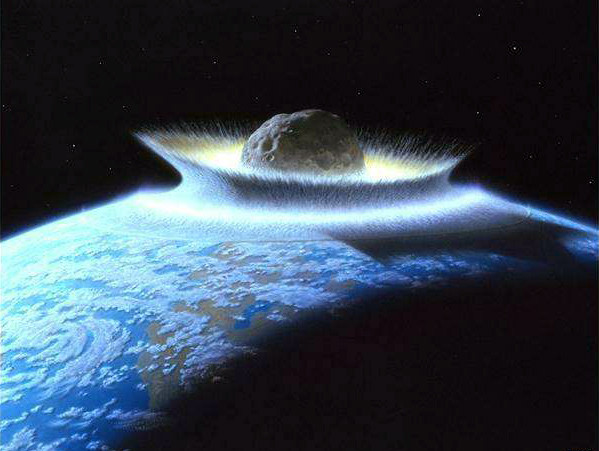UK could be hit by major asteroid tsunami this century says Southampton study

Britain could be hit by a devastating asteroid tsunami given high chances of a space rock hitting off the Norfolk coast in this century.
The prediction from scientists was made after a simulation using new software "Armor" showed that there is a one in 10,000 chance that a space rock could hit the waters in the next 85 years.
Experts at the University of Southampton developed Armor which predicts the impact "corridors" of known asteroids and calculated the risk from them.
The maps show the wide asteroid risk zone running through Europe, passing directly over Scandinavia, Germany, France and Spain.
The risk to the UK is from asteroids falling into the Atlantic Ocean and North Sea. The software allows scientists to calculate the region and extent of damage.
Doctorate student Clemens Rumpf who developed the software expects it will help organisations like the United Nations decide on the course of action.
"We have discovered around 13,000 asteroids and around 500 of them have a chance of hitting Earth," he said. Armor also allows seeing how a small push will deflect the rocks.
South Australia is at high risk with many asteroid paths going across it while the US is largely unaffected.
Dr Hugh Lewis, Senior Lecturer in Aerospace Engineering, at the University of Southampton, told the Telegraph: "When you look at global vulnerability Britain is at very high risk. You might think that is odd because we are a very small country but we have a high population density on the coastline so that means we are vulnerable to an impact in the Atlantic Ocean."
Big asteroid impacts like the one believed to have sounded the death knell for dinosaurs 65 million years ago are rare. The last large asteroid to hit Earth was the Tunguska impact of 1908 which felled 80 million trees over an area of 830 square miles, with the energy of 1,000 atom bombs.
Past asteroid impacts
Smaller ones like the 2013 Chelyabinsk in Russia, when an 18-metre wide debris fell through, also have the potential for much damage and are more frequent.
The 7,000-tonne meteoroid exploded in the skies with the force of 30 atomic bombs, blowing out windows, destroying buildings and injuring 1,000 people with a rain of debris.
A computer simulation by the Lawrence Livermore National Laboratory recently showed that asteroids of about 165 feet (50 metres) in diameter crashing into the ocean could produce waves up to 10 feet (3 metres) high.
Nearly 1,000 potentially hazardous asteroids periodically cross the Earth's orbit. While the smaller ones burn, those bigger than 100 metres reach the Earth. This can happen as frequently as every 30-40 years.
Nasa is currently tracking some of these to predict their future paths but the existing asteroid detection systems can only track 1% of the estimated objects that orbit the sun.
In a latest, Nasa and the US National Nuclear Security Administration are studying the possibility of destroying Earth-threatening asteroids using nuclear weapons.
© Copyright IBTimes 2025. All rights reserved.





















